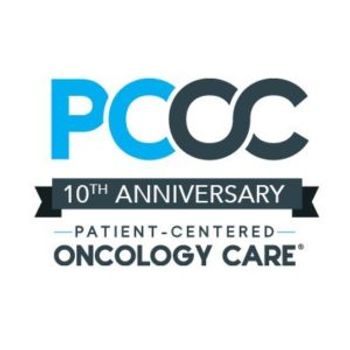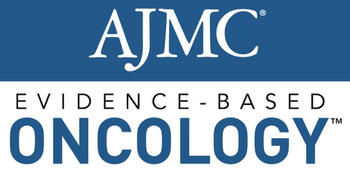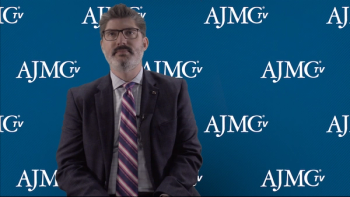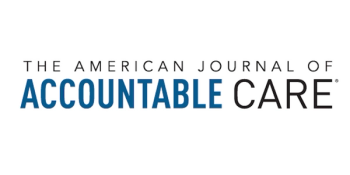
Experts from Optum, WellMed, and Reliant discuss strategies for bringing value-based payment into specialty care through the use of education and analytics.

Experts from Optum, WellMed, and Reliant discuss strategies for bringing value-based payment into specialty care through the use of education and analytics.

Jeffrey Patton, MD, is the CEO of OneOncology, a national partnership of independent community oncologists based in Nashville, Tennessee. He is also executive chairman of the board, Tennessee Oncology, and a member of the board, Community Oncology Alliance.

Vertical integration of payers and pharmacy benefit managers (PBMs) took flight with the mergers of Aetna and CVS Health and of Cigna and ExpressScripts. Panelists at Patient-Centered Oncology Care® said the shift has filtered down to affect access at the practice level.

Today’s challenge, according to Microsoft's Iksha Herr, MS, is learning how to leverage artificial intelligence (AI) to process the waves of health care data and to drive insights that lead to better care delivery.

Elizabeth Kwo, MD, MBA, MPH, is the deputy chief clinical officer, Anthem Blue Cross Blue Shield, Boston, Massachusetts. Kwo is a faculty lecturer at Harvard Medical School and physician entrepreneur.

The discussion, "Remote Patient Monitoring: Case Studies From the Front Lines,” explored real-world experiences with technology that has taken on greater heft as the COVID-19 pandemic continues to affect health care delivery.

Under the expanded FDA label, up to 1.8 million individuals in the United States could be eligible for sacubitril/valsartan, and up to 180,000 worsening heart failure (HF) events could be prevented or postponed.

Stacy Courtnay is the community network chair for the Arthritis Foundation in Atlanta highlights a report that discusses how understanding patient experiences in RA can shift questions researchers ask.


Megan Olsen, MPH, principal at Avalere, discusses how the impact of small patient populations and other limitations may influence payer conversations about gene and cell therapies.

Frederick Locke, MD, vice chair, Department of Blood and Marrow Transplant and Cellular Immunotherapy Program, co-leader, Immuno-Oncology, Moffitt Cancer Center, discusses findings of the phase 3 ZUMA-7 trial presented at ASH 2021 and how use of axicabtagene ciloleucel can be optimally applied in a real-world setting.

Two-third of those who receive a chronic lymphocytic leukemia (CLL) diagnosis are age 65 or older, so the ease with which drugs are covered in Medicare has an outsized role in patient access to care.

Theresa Juday, RPh, director, Specialty Product Development, CVS Health, discusses the indirect and direct cost burden associated with chronic insomnia.

This article provides insight into health care purchaser priorities and considerations for direct contracting opportunities, along with considerations for interested accountable care organizations.

In a local market with multiple accountable care organizations and multiple Medicare Advantage plans, how do we administratively set rates that are localized enough so that they do not drive consolidation?

Kimberly Westrich, MA, vice president of health services research at the National Pharmaceutical Council, discusses the shift to a value-based system from a fee-for-service one and how the health care system can incentivize high-value care.

It’s right to acknowledge that dental, hearing, and vision are important for total health care for Medicare beneficiaries, said Melissa Andel, MPP, vice president of health policy at CommonHealth Solutions.

Daniel Wolfson, executive vice president and chief operating officer of the ABIM Foundation, speaks on factors influencing mistrust of the health care system and efforts to improve quality care.

The Alliance of Community Health Plans (ACHP) recently released its 2021 Report on Affordability. In this episode of Managed Care Cast, we speak with the organization about the steps that its payer members are taking to lower costs through offerings such as virtual-first care, remote patient monitoring, and other new products, some of which were created because of the pandemic.

As the cost of oncology drugs increases, there has been a growing pressure to manage oncology drug spend, which some payers have done by establishing preferred therapies, including biosimilars.

The different approaches to setting benchmarks for population-based payment models (empirical, bidding based, and administratively set) have unique advantages and challenges.

Implementing a proactive provider outreach program resulted in significantly more prior authorization recertifications and a reduction in time to submission.

Among many presentations during a hot topics session at the American Academy of Ophthalmology 2021 annual meeting, speakers discussed the first FDA approved therapy for thyroid eye disease and the latest in enhanced monofocal intraocular lenses (IOLs).

Emergency department utilization for nonemergent ophthalmic conditions is on the rise in the United States, but presentation types vary significantly based on patient demographics, according to 2 posters presented at the American Academy of Ophthalmology (AAO) 2021 meeting.

Uveitic macular edema is common in patients with noninfectious uveitis, and its significant burden on patients and payers warrants more specific treatment guidelines to minimize quality-of-life and economic effects.

259 Prospect Plains Rd, Bldg H
Cranbury, NJ 08512
© 2025 MJH Life Sciences®
All rights reserved.
